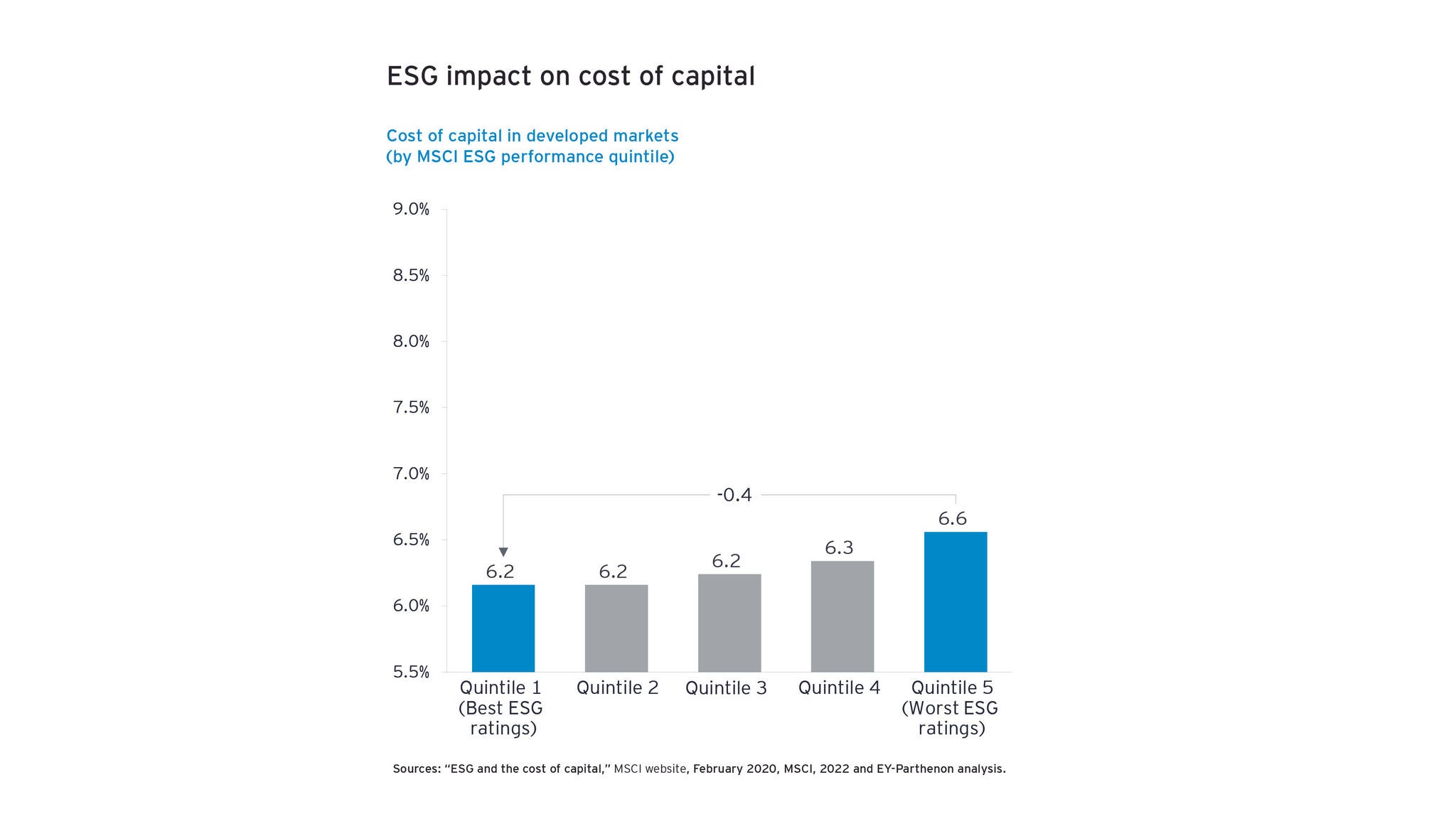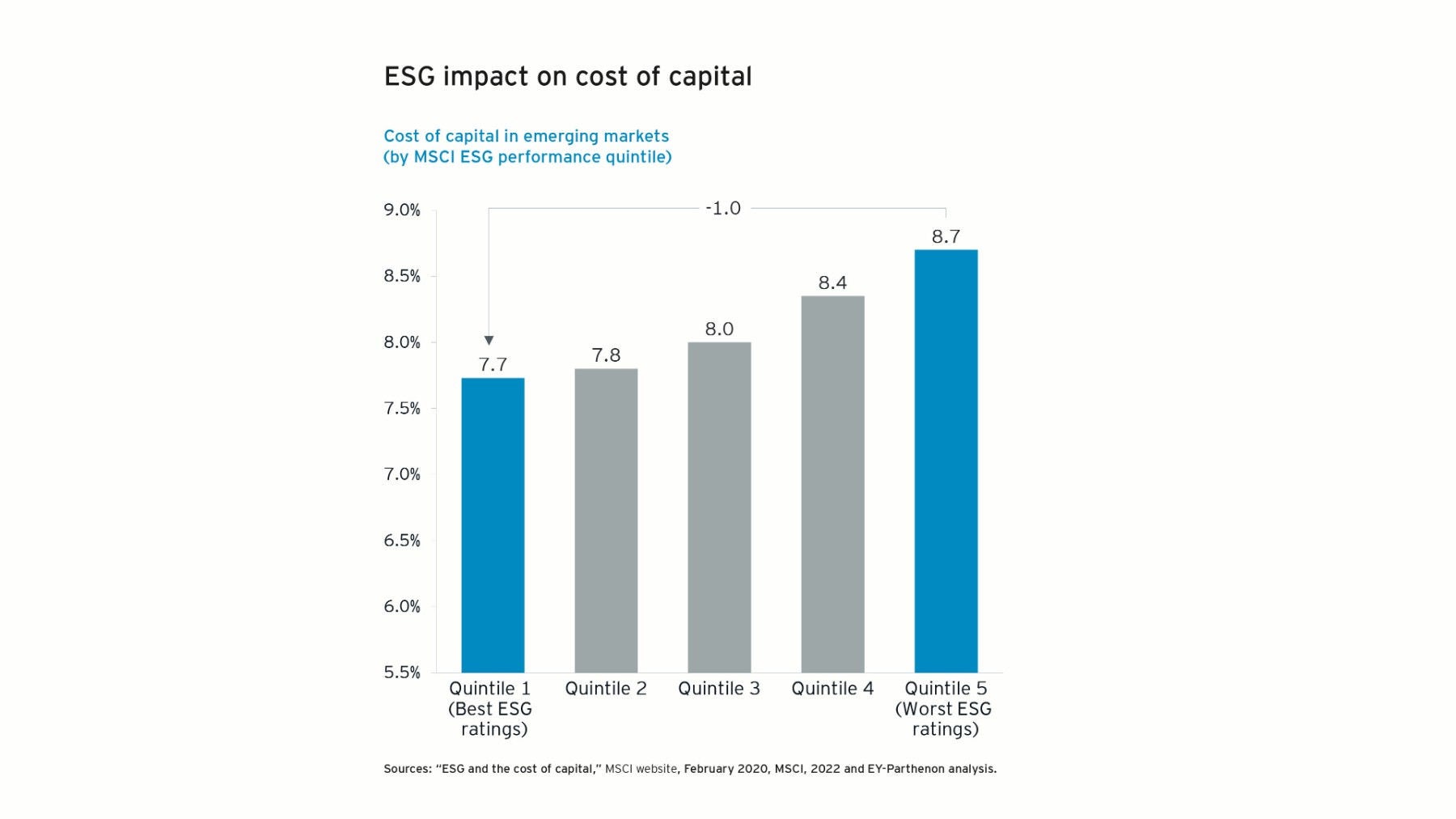EY refers to the global organization, and may refer to one or more, of the member firms of Ernst & Young Global Limited, each of which is a separate legal entity. Ernst & Young Global Limited, a UK company limited by guarantee, does not provide services to clients.
How EY can Help
-
Sustainability and ESG services that help protect and create value for business, people, society and the world. Explore the depth and breadth of EY services and solutions.
Read more
Third, a focus on sustainability has a positive impact on operations. EY-Parthenon teams analyzed the profitability of the top sustainable corporations globally based on Corporate Knights’ 2020 Global 100 ranking and found that sustainable companies outperformed their industry peers on gross profit, EBITDA, EBIT and net profit metrics. Companies with a strong sustainability focus tend to pursue operational and process efficiencies, thereby bolstering profitability. They do so through initiatives, such as reducing waste, streamlining supply chains and fostering an innovative culture that advocates circularity.
Fourth, companies with higher ESG ratings have been shown to be associated with reduced idiosyncratic risks (inherent risks associated with the company). Such companies experienced a lower occurrence of large, adverse idiosyncratic stock price moves between 2009 and 2019 compared with companies with lower ESG ratings.1
This can be attributed to better risk management practices and stringent compliance standards across their operations and supply chains. Consequently, these organizations tend to be more resilient and less vulnerable to unforeseen events, such as compliance breaches and supply disruptions, thereby delivering higher risk-adjusted returns for investors.








